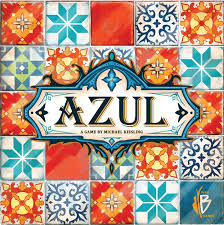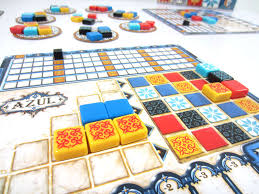Why people don’t want to play your game (and what to do about it)
This article about why people don’t want to play your game originally appeared on my site in September 2018, shortly after I left my 17-year career in health care informatics to work in the board game industry full time. It was also just after I started consistently blogging every week. Now, more than 3 and a half years later, I’m well over 150 articles and I don’t plan on stopping any time soon!
I’ve also learned a lot during this time and looking back on this article, I felt it could use some updates and more examples. So, I’ve made some improvements. I hope you get a lot out of this article!
*****************************
Let’s face it. You just worked a long day. Maybe you had to go through negotiation, bribery, and warfare to get your kids to bed. You’re finally caught up on all the chores on your to-do list. Now you just want to settle down into a nice game with your partner or a few friends.
The last thing you want to do is spend the next hour poring over a complex rulebook trying to understand how to play the game you just shelled out 60 bucks for. You’d rather ease right into a game and experience the world outside of your normal reality.
So, instead of trying out that new game you’ve had sitting on your shelf of shame (or shelf of opportunity, depending on your perspective) that you’ve been eager to play, you just grab whatever game off your shelf is familiar.
Does this sound like you? Well, this is a common feeling among many gamers.
When designing a game, it’s important to remember what it’s like the first time we open a new game and try to figure out how it’s played.
Keep this in mind to get more people to play your game
We have to remember that most people are casual gamers, not hard-core hobbyists who don’t mind spending a lot of time trying to figure out a game.
We have to remember that simplicity is elegance.
That’s not to say that your game should be as simple and uninteresting as Tic-Tac-Toe. But it should be easy to grasp right away. The true experience for players is then in the tricky choices and gameplay that will keep them coming back for more.
Take Azul for example.


The concept is simple. Take all the tiles of one color from one of the factory displays of your choice, slide the rest of the tiles into the center, and place your chosen tile(s) on your board. What could be easier?
The challenge comes in deciding which tile you should choose based on what would benefit you and/or what will make things more difficult for your opponent(s), along with where you will place tiles in order to maximize your score, balancing between short-term and long-term goals.
Compare this to a game where players have to make a choice between 10 different options, keep track of multiple things, remember to take specific actions at the end of their turn, and pass something to the next player. Now every player must complete the same steps, which ends phase 1. Did I mention there are six phases before the first round is over?

Why take a chance on something so complex? Yes, I went there with the Monopoly pic. Not for complexity, but… you know.
That’s not to say that there isn’t a market for complex games with a huge number of decision points, many different phases, and an extensive rulebook, but this type of game will likely appeal less to most casual gamers, who make up the majority of the market.
What to watch for when playtesting your game
When you’re playtesting your game and you notice that people stop paying attention as you’re reading or explaining the rules, have to constantly ask questions throughout the game, or there is a lot of confusion about gameplay and player actions, then your game might be too complex.
The answer is to simplify. This doesn’t mean you should make your game simplistic, rather make it easier to understand, and with perhaps less actions or choices at different points.
Try reducing it down by removing one aspect or decreasing the number of things a player does on their turn. I have found that giving players a choice of 3-5 different options that are all potentially beneficial in some way is a good range to aim for. Sometimes you can get away with more than this, but this range seems to work well in most cases.
When it comes to resources, I’ve heard strong arguments to keep them to 5-6 or less. Much more than this makes it difficult for players to keep track of everything and may slow down your game or make it less fun.
Sometimes even a choice between two interesting and viable options can work really well. The solo game Friday is a great example of giving the player a choice between two obstacles to overcome, each giving a different reward, and making for interesting choices and strategies that a player can take.
Many press your luck games, including Quacks of Quedlinburg, Port Royal, Incan Gold, and Can’t Stop give you two simple choices each turn – stop or continue. Do you risk it to get more points or gold, with the possibility of losing it all, or stop and collect what you’ve already gained? This can make for some highly memorable moments when a player either pulls off a miracle comeback or goes down in flames, losing a huge gain.
The more choices a player has, the more likely they will fall into AP (analysis paralysis). The longer one player takes to make a decision, the longer other players will have to wait for their turn, which is something you want to avoid. Quick or simultaneous turns, or at least something for players to strategize while it is not their turn, is something to strive for and something I discussed further in an article about keeping players engaged.
Wrapping it up
By making some changes and simplifying your game, you might just increase engagement and improve the overall flow. If players have less time between their turns, but still have enough to think about and plan for in between, then you’re probably on the right track.
What change did you make to one of your games to simplify it, which made it much better? Are there any games you admire for their simplicity?
Please leave a comment and share your thoughts!

2 comments
Garth Kauffman
Great article Joe. I usually play with my wife a daughter and find we get the smaller games to the table much more often. I liken a complex euro game to a Mahler symphony compared to a Bach cello concerto. There are times I like to sink my teeth into a dense, plodding piece that challenges me but most of the time I prefer something elegant and essential. Simpler games give more space to enjoy the people you’re with and that’s the main reason I love boardgames.
Joe Slack
Thanks, Garth! It’s so great that there is such a variety of board games for all tastes, groups, and moods. Simple and elegant is sometimes tough to get right, but when it works, it can really shine.